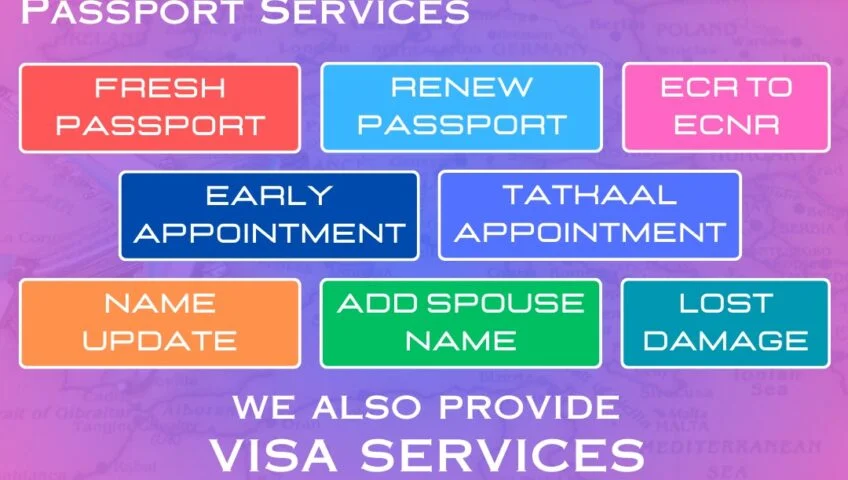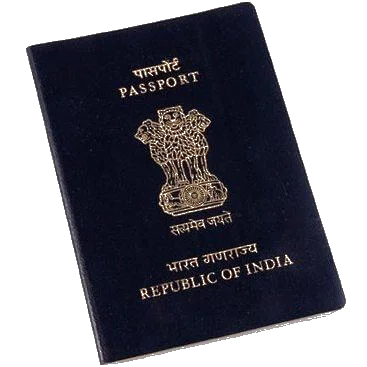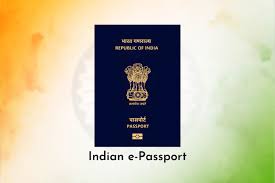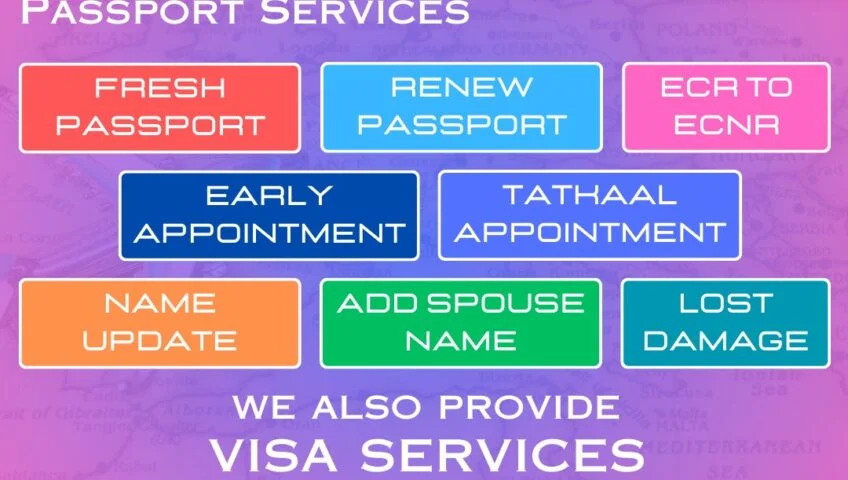The dream of a new adventure, a professional opportunity abroad, or a family visit often begins with the simple act of applying for a passport. Yet, for countless applicants, this initial step can transform into a nightmare of delays, rejections, and bureaucratic frustration. You may have heard a story from a friend who had their application put on hold for months because of a minor spelling mistake, or a colleague who had to reapply entirely because of a missing document.
These aren’t just isolated incidents; they are common pitfalls that can be easily avoided with the right knowledge. In a world where time is a luxury, a rejected passport application means not just a lost fee but lost time, missed opportunities, and immense stress. This article is your definitive, 2000-word-plus masterclass designed to equip you with the knowledge to sidestep every conceivable mistake and ensure your passport application is not just successful, but flawlessly executed from the get-go.

A Deep Dive into Passport Application Pitfalls: The Ultimate Guide to a Flawless Process
We will go beyond the basics, breaking down the application process into a series of potential traps—from the seemingly innocuous online form errors to the complex challenges of police verification—and provide you with a comprehensive roadmap to a smooth and successful passport journey.
Section 1: The Foundation of Failure – Documentation Discrepancies More than any other reason, documentation issues are the primary cause of passport application rejections. The system is designed for meticulous verification, and even a single misplaced character can be a deal-breaker.
1.1 The Mismatching Details Trap
This is the most subtle and dangerous pitfall. Applicants often assume that as long as their primary documents (Aadhaar, PAN, Voter ID) are valid, they’re good to go. The reality is far more complex. The name, date of birth, and even the names of your parents must match exactly across every single document you submit.

- The Spelling Nightmare: A passport application is not a spell-checker’s playground. If your 10th-grade certificate spells your father’s name as “Mahesh Kumar” and your Aadhaar card has it as “Maheshkumar,” the system will flag it as a discrepancy. Similarly, minor spelling errors like “Mohit Singh” vs. “Mohit Singhh” or an extra space can lead to an immediate rejection at the Passport Seva Kendra (PSK) counter. The officials are bound by strict guidelines to reject any application with even a single mismatched character.
- The Date of Birth Conundrum: Your Date of Birth (DoB) is a critical piece of information. While some documents might list just the year, your birth certificate is the primary and most important proof. A discrepancy between the DoB on your birth certificate and your Aadhaar card, for instance, is a major pitfall. You will be asked to get one of the documents updated, a process that can take weeks or even months.
Solution: Before you even begin the online application, create a master checklist. List every document you plan to submit. Cross-reference the spelling of your name, DoB, and the names of your parents on each one. If you find any mismatch, get the incorrect document corrected first. For major name changes, such as those after marriage or for other reasons, remember that an official affidavit and a newspaper advertisement are required.
1.2 The Missing and Outdated Documents Blunder
The document checklist provided on the official Passport Seva portal is not just a suggestion; it is a rigid requirement. Omitting a single document can bring the process to a screeching halt.

- The Unofficial Documents Trap: Applicants sometimes submit unofficial documents like a private company’s ID card or an old, handwritten document as proof. The system only accepts specific, government-issued documents as proof of identity, address, and date of birth. Always refer to the official list on the Passport Seva website to ensure your documents are valid.
- The Annexure Oversight: Many applications for specific categories require a sworn affidavit in a particular format, known as an Annexure.
- Annexure-H: Mandatory for minors when only one parent is applying.
- Annexure-E: A self-declaration required for most passport applications.
- Annexure-F: The no-objection certificate for Tatkal applications.
- Failing to submit the correct Annexure is a very common mistake. These are not optional; they are a legal declaration required for the process.
Solution: Download and print the official document checklist for your specific application type from the Passport Seva website. Gather all the originals and make at least two sets of photocopies. For any Annexure, download the official format, fill it out, and ensure it is properly attested if required.
1.3 The Poor Quality Copies Mistake
At the PSK, the officials need to be able to scan and verify your documents. A blurry or faded photocopy is a major pitfall that many applicants overlook.
- The Consequence: If your documents are deemed illegible, the PSK official will mark your application as “On Hold” and ask you to come back with clear copies. This results in you having to book another appointment and wait all over again, often with a significant delay.
Solution: Use a professional photocopying service. Ensure every detail, including the smallest letters and numbers, is crystal clear on the copy. Self-attest each photocopy by signing it and writing “Self-attested” on it.
Section 2: The Digital Minefield – Online Form Errors
The online application form is the first point of contact with the passport system. A simple data entry error can lead to a domino effect of problems.
2.1 The Typo and Data Entry Nightmare
The online form is a gateway to the government’s official database. A simple typo can prevent the system from cross-verifying your details.
- The Mismatched Data: The system cross-references your entered data with your Aadhaar, PAN, and other government databases. If you misspell your name, address, or parents’ details, the system won’t find a match, leading to an “Application Not Found” error at the PSK.
- The Consequences: This error forces you to correct the form and start a new application, which means a new Application Reference Number (ARN) and a new fee payment.
Solution: Do not rush while filling the online form. Take your time, and have all your documents open in front of you. After filling out the form, print it or save it as a PDF and cross-check every single field with your original documents one last time before clicking “Submit.”
2.2 The “Fresh vs. Re-issue” Confusion
This is a common but easily avoidable mistake. The “Fresh” application is only for first-time applicants who have never held a passport before.
- The Mistake: Many people apply for a “Fresh” passport when their old passport has expired, is damaged, or has run out of pages.
- The Consequence: When you reach the PSK, the official will find your old passport details in the system. They will be unable to process your “Fresh” application, and you will be asked to go back and apply for a “Re-issue,” leading to a significant delay.
Solution: If you have ever held a passport before, even as a minor, or if it expired years ago, always choose “Re-issue.” The passport system keeps a permanent record of every passport ever issued to an individual.
Section 3: The Unforeseen Hurdles – The Police Verification Process
Police verification (PV) is an external step over which you have limited control, but you can prepare to avoid pitfalls. A poor PV report can be a non-starter for your application.
3.1 The Incorrect Address Problem
The PV officer will visit the address you have provided in your application. If your address on the form does not match your current physical residence, or if you have recently moved, the police will file a “not found” report.
- The Consequence: An adverse report from the police will lead to your application being put “on hold” or even rejected.
Solution: Ensure the address on your application is your current residential address. If you have moved in the last year, you may need to provide proof of your old address as well. Inform your family or neighbors that a police officer may be visiting for verification purposes.
3.2 The “Not Found” Report
This happens when the PV officer visits your home and you are not available.
- The Consequence: The officer will report that they were unable to verify your residency, leading to a negative report and a delay.
Solution: Be available at your residence on the day of the PV visit. If you are a student or a working professional who is not home during the day, coordinate with your family members to handle the verification. Be reachable on your mobile number at all times.
3.3 The Adverse Report and Its Consequences
The police check not only your address but also your criminal record.
- The Cause: Any pending criminal cases, a history of serious offenses, or an arrest warrant will result in an adverse report.
- The Consequence: This is the most severe pitfall, as an adverse PV report can lead to the passport application being put on hold indefinitely or outright rejected.
Solution: Be honest in your application. If you have any pending court cases or legal issues, declare them. The passport authorities have a system to verify this information, and hiding it will only make the situation worse.
Section 4: The Administrative and Financial Mistakes
These pitfalls are more about carelessness than complexity, but they are equally damaging to your timeline.
4.1 The Missed Appointment
The Passport Seva system has an electronic queuing system. If you fail to show up for your appointment at the PSK, you not only lose your turn but also have to start over.
- The Consequence: The system allows you to reschedule your appointment only a limited number of times. Missing an appointment can mean losing your slot and having to book a new one, which could be weeks or months away.
Solution: Be punctual. Arrive at the PSK at least 15-20 minutes before your scheduled slot. Carry your appointment receipt, all original documents, and photocopies.
4.2 The Unofficial Agent Trap
In a rush to get a passport, many people fall for agents who promise “guaranteed” fast-track services.
- The Trap: These agents often charge exorbitant fees for a service that you can do yourself. They may use fraudulent means or simply fill out the online form for you, which you can do for free. In the worst-case scenario, they may be a front for a scam, and you may end up losing money and your identity details.
Solution: Only use the official Passport Seva Portal (www.passportindia.gov.in). All payments must be made directly to the government via this portal. There is no other legitimate way to pay for a passport application.
Section 5: The Master Checklist for a Flawless Application
To consolidate everything, here is a simple, actionable checklist to ensure you avoid every pitfall.
Before You Apply Online:
- Document Verification: Gather all your documents. Create a master list of your name, DoB, and parents’ names. Ensure every detail matches exactly. If there’s a mismatch, get the document corrected first.
- Application Type: Confirm whether you need a Fresh or Re-issue passport. If you have ever had a passport before, it’s a Re-issue.
- Document Scrutiny: Check every photocopy to ensure it’s clear and legible.
During the Online Application:
- Slow Down: Take your time to fill the form. Double-check every field, especially spellings.
- Review: After filling the form, download the PDF copy and meticulously cross-check all information before final submission.
- Pay Online: Pay the fee only on the official portal.
After Submission (Post-PSK Visit):
- Be Available: Ensure you are available at your residence for police verification. Inform family members to cooperate with the officials.
- Track Your Status: Regularly check your application status on the official portal to see if there are any issues. If the status changes to “On Hold,” take immediate action.
Final Thoughts
The passport application process is not designed to be difficult; it is designed to be thorough. Every step—from documentation to police verification—is a security measure to ensure the integrity of the passport. By being prepared, paying attention to detail, and trusting the official process, you can navigate these pitfalls with ease. Your passport is your ticket to the world, and by avoiding these common mistakes, you ensure that the journey begins on a high note.

